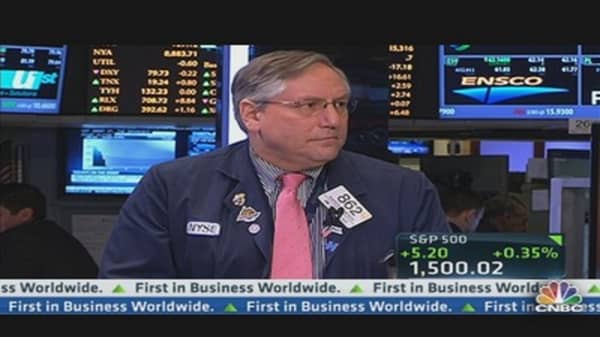While getting to this point seemed unimaginable not long ago, the Dow industrials are nearing an all-time high after a tumultuous recent past and a decidedly uncertain future.
A Dow Jones Industrial Average trading over 14,000 seems like a quaint relic that hearkens back to the days before subprime, before the near-collapse of Wall Street, before the economy depended on Federal Reserve printing presses to stay afloat.
Looking ahead, the market confronts a set of circumstances with cross purposes: It needs the Fed to keep pushing stimulus but eventually must break free from that support if the gains are going to be sustained. (Read More: Bears on the Brink: 'I Can't Fight It Anymore')
"We're screwed long-term," said Keith Springer, president of Springer Financial Advisory in Sacramento, Calif. "But what's funny is this has been the trend for the last 20 years. We have a crisis, build a bubble to get out of it for five years, the market makes a slight new high, and then we crash."
The Dow hit its closing high of 14,164.53 on Oct. 9, 2007 amid a surge in optimism that there was virtually no limit to how high the market could climb.
The question of whether the current market is in a bubble phase - as Springer suggests - is likely one that will be answered only in retrospect. But there is little debate over whether the Fed has played an integral role in pumping it higher.
Those few who are unsure can check the central bank's own literature: A July 11, 2012 study from the New York Fed stated flatly that the market owed most of its post-1994 gains - that's more than 1,000 points ago on the Standard & Poor's 500 - to the 24-hour period before the Fed's Open Markets Committee meetings. (Read More: Market Savior? Stocks Might Be 50% Lower Without Fed)






